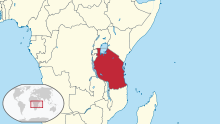
Nymphaea is a genus of hardy and tender aquatic plants in the family Nymphaeaceae. The genus has a cosmopolitan distribution. Many species are cultivated as ornamental plants, and many cultivars have been bred. Some taxa occur as introduced species where they are not native, and some are weeds. Plants of the genus are known commonly as water lilies, or waterlilies in the United Kingdom. The genus name is from the Greek νυμφαία, nymphaia and the Latin nymphaea, which means "water lily" and were inspired by the nymphs of Greek and Latin mythology.

Nymphaea odorata subsp. tuberosa is a subspecies of Nymphaea odorata native to the region spanning from Central and Eastern Canada, extending to North Central and Northeastern United States.

Nymphaea nouchali, often known by its synonym Nymphaea stellata, or by common names blue lotus, star lotus, red water lily, dwarf aquarium lily, blue water lily, blue star water lily or manel flower, is a water lily of genus Nymphaea. It is native to southern and eastern parts of Asia, and is the national flower of Bangladesh and Sri Lanka. In Sanskrit it is called utpala. This species is usually considered to include the blue Egyptian lotus N. nouchali var. caerulea. In the past, taxonomic confusion has occurred, with the name Nymphaea nouchali incorrectly applied to Nymphaea pubescens.

Nymphaea thermarum, also known as Pygmy Rwandan water lily, is a species of water lily that is endemic to Rwanda. Once thought to be extinct in the wild, all wild plants were believed to be lost due to destruction of its native habitat, but it was thought to be saved from extinction when it was grown from seed at the Royal Botanic Gardens, Kew in 2009. A previously-unknown wild population was discovered in 2023.

Nymphaea heudelotii is a species of waterlily native to the region spanning from tropical West Africa to Uganda and Botswana.

Nymphaea siamensis is a species of waterlily endemic to Thailand.

Nymphaea vaporalis is a species of waterlily endemic to Queensland, Australia.

Nymphaea alexii is a species of waterlily endemic to Queensland, Australia.

Nymphaea carpentariae is a species of waterlily native to Queensland and Western Australia.

Nymphaea elleniae is a species of waterlily native to Papua New Guinea, and North Queensland, Australia.

Nymphaea georginae is a species of waterlily native to the Northern Territory, and the state of Queensland, Australia.

Nymphaea immutabilis is a species of waterlily native to Western Australia, the Northern Territory, and Queensland, Australia.

Nymphaea jacobsii is a species of waterlily endemic to Queensland, Australia.

Nymphaea kakaduensis is a species of waterlily endemic to the Northern Territory, Australia.

Nymphaea loriana is a species of waterlily endemic to Manitoba, and Saskatchewan, Canada.

Nymphaea lukei is a species of waterlily endemic to Western Australia.

Nymphaea rubra is a species of waterlily native to the region spanning from Sri Lanka and northeastern India to western and central Malesia. Additionally, it has been introduced to regions such as Southeast China, Cuba, Guyana, Hungary, and Suriname.

Nymphaea sulphurea is a species of waterlily native to Angola, Zambia, and the Democratic Republic of the Congo.

Nuphar saikokuensis is a species of rhizomatous aquatic plant endemic to Japan.

Nymphaea subg. Brachyceras is a subgenus of the genus Nymphaea.

















